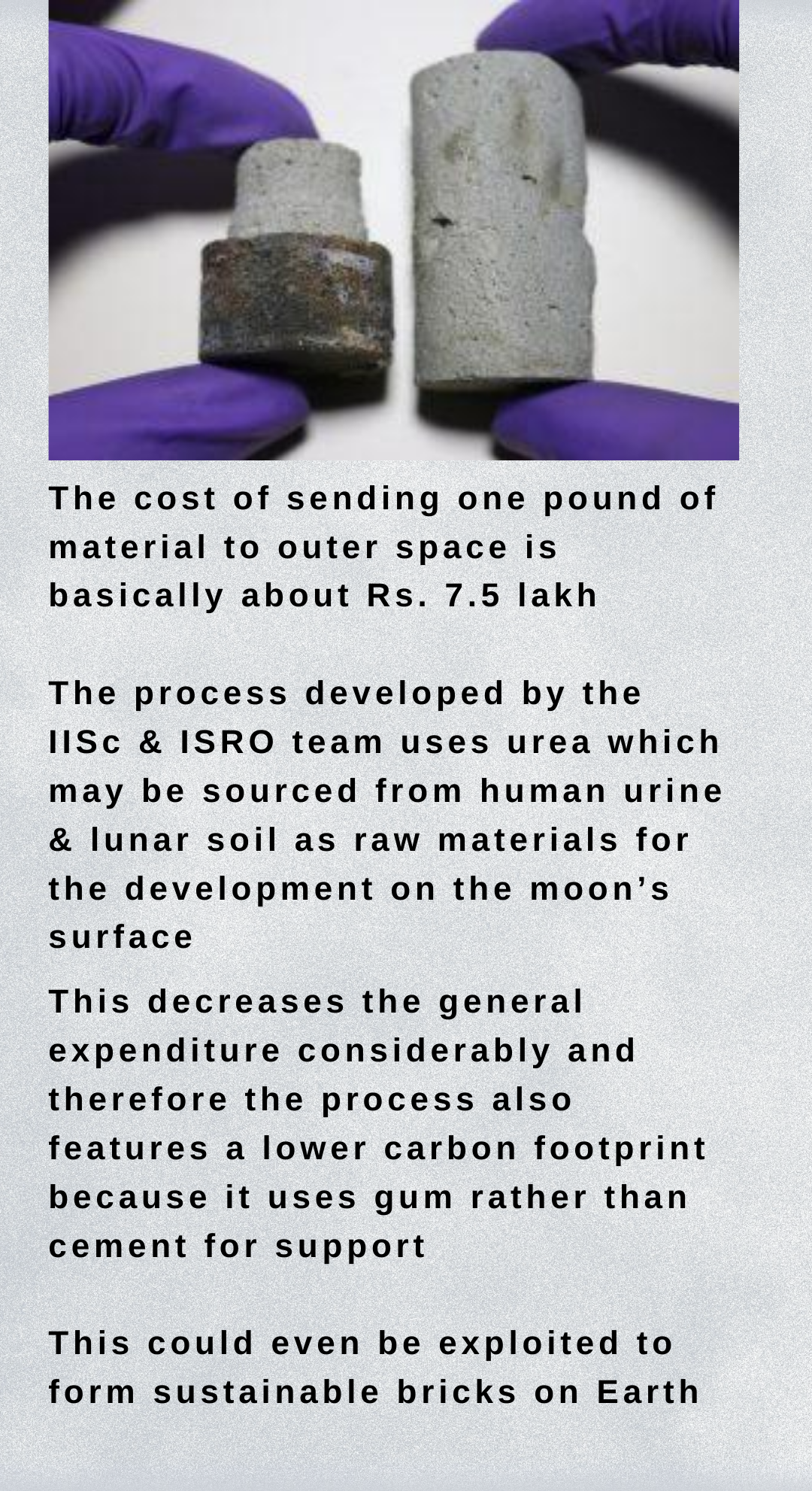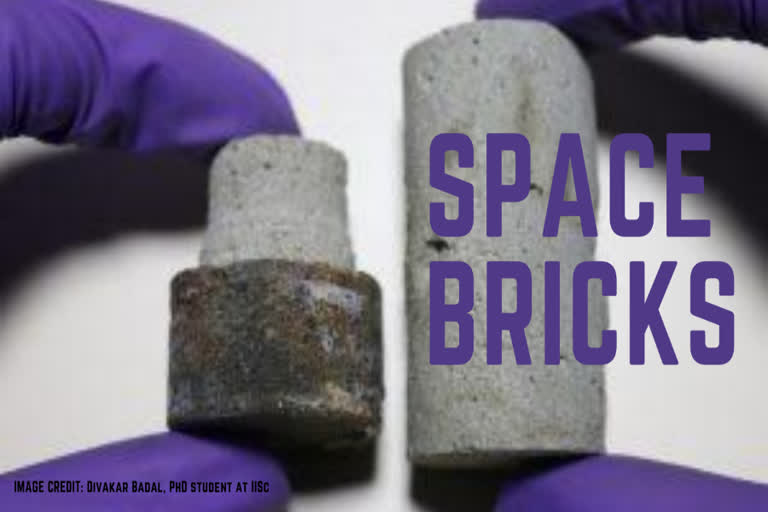Bengaluru: The research team from the Indian Institute of Science (IISc, Bengaluru) & the Indian Space Research Organisation (ISRO) has developed a sustainable process for creating brick-like structures on the moon, also tweeted.
-
IISc & @isro scientists have developed a sustainable process for making "space bricks" from lunar soil using bacteria & guar gum. These could eventually be used to assemble structures for habitation on the moon’s surface. https://t.co/6zQWHpGzKe pic.twitter.com/SnHR2QKI2u
— IISc Bangalore (@iiscbangalore) August 14, 2020 " class="align-text-top noRightClick twitterSection" data="
">IISc & @isro scientists have developed a sustainable process for making "space bricks" from lunar soil using bacteria & guar gum. These could eventually be used to assemble structures for habitation on the moon’s surface. https://t.co/6zQWHpGzKe pic.twitter.com/SnHR2QKI2u
— IISc Bangalore (@iiscbangalore) August 14, 2020IISc & @isro scientists have developed a sustainable process for making "space bricks" from lunar soil using bacteria & guar gum. These could eventually be used to assemble structures for habitation on the moon’s surface. https://t.co/6zQWHpGzKe pic.twitter.com/SnHR2QKI2u
— IISc Bangalore (@iiscbangalore) August 14, 2020
It exploits lunar soil and uses bacteria and guar beans to consolidate the soil into possible load-bearing structures. The researchers suggest that these “space bricks” could eventually be wont to assemble structures for habitation on the moon’s surface.
Aloke Kumar, Asst. Prof. within the Department of engineering, IISc said, “It is basically exciting because it brings two different fields like biology & engineering together.”

Some micro-organisms can produce minerals through metabolic pathways like Sporosarcina pasteurii which produces carbonate crystals through a metabolic pathway called the ureolytic cycle. It uses urea and calcium to make these crystals as byproducts of the pathway.
“Living organisms are involved in such mineral precipitation since the dawn of the Cambrian, and modern science has now found a use for them,” Kumar said.
They first mixed the bacteria with a simulant of lunar soil then; they added the specified urea and calcium sources alongside gum extracted from locally-sourced guar beans. The gum was added to extend the strength of the fabric by serving as a scaffold for carbonate precipitation. The final product obtained after a couple of days of incubation was found to possess significant strength and machinability.
Koushik Viswanathan, Asst. Prof. within the Department of engineering, IISc says, “Our material might be fabricated into any freeform shape employing a simple lathe. This is advantageous because this completely circumvents the necessity for specialised moulds – a standard problem when trying to form a spread of shapes by casting. This capability could even be exploited to form intricate interlocking structures for construction on the moon, without the necessity for extra fastening mechanisms.”
Rashmi Dikshit, a DBT-BioCARe Fellow at IISc, also investigated the utilization of other locally available soil bacteria within the place of S. pasteurii. After testing different soil samples in Bangalore, the researchers found an ideal candidate with similar properties that is Bacillus velezensis.
A vial of S. pasteurii can cost Rs. 50,000; B. velezensis, on the other hand, is about ten times less expensive, the researchers said.
“We have quite a distance to go before we look at extra-terrestrial habitats. Our next step is to form larger bricks with a more automated and parallel production process and simultaneously, we might also wish to further enhance the strength of those bricks and test them under varied loading conditions like impacts and possibly moonquakes,” says Kumar
Also Read: CSIRO and BHP study to include Turtle nail clippings and Shark mating



